Overview
The article titled "10 Nontraditional Startup Signals Every Sales Leader Should Know" identifies unique indicators crucial for sales leaders aiming to recognize growth opportunities and challenges inherent to startups. It underscores the significance of strategies such as cohort retention analysis, investment in owned channels, and philosophical diversity. These nontraditional signals are essential for guiding sales leaders in adapting their approaches, fostering sustainable growth amidst a competitive landscape.
Introduction
Startups today navigate an increasingly complex landscape, where traditional indicators of success are often overshadowed by emerging, nontraditional signals. As sales leaders seek innovative strategies to drive growth, understanding these unconventional metrics is essential. What if the key to unlocking sustainable success lies not in the usual sales tactics, but in recognizing unique patterns and behaviors that signal a startup's potential?
This article explores ten nontraditional startup signals that every sales leader must be aware of, offering insights that could redefine their approach to scaling in a competitive market.
Websets: AI-Powered B2B Lead Generation for Startup Growth
Websets revolutionizes through advanced algorithms, empowering startups to connect efficiently with potential clients. By meticulously filtering vast datasets, business leaders can pinpoint and engage the right professionals, significantly enhancing outreach and conversion rates. This AI-driven sales intelligence search simplifies the lead generation process and enriches leads with valuable information such as emails, company details, and positions.
Companies utilizing Websets' API have experienced a remarkable 25% increase in conversion rates and a 30% rise in average order value, alongside a 40% reduction in manual work. As sales leaders recognize the critical need for precise lead targeting, it is noteworthy that 90% of marketers now rely on AI for faster decision-making, underscoring the technology's pivotal role in modern sales strategies.
The incorporation of Websets' API not only improves lead generation but also boosts overall operational efficiency, helping new businesses recognize nontraditional startup signals to scale effectively in a competitive environment.

Cohort Retention Analysis: A Key Indicator of Startup Viability
Cohort retention analysis is crucial for monitoring the behavior of specific client groups over time. For startups, high retention rates are a strong indicator of product-market fit and client satisfaction, which can be considered as nontraditional startup signals. Notably, research shows that nearly 65% of business income originates from returning clients, underscoring the importance of user retention.
Furthermore, elevated Net Promoter Scores (NPS) suggest that clients are satisfied and willing to recommend products, thereby linking satisfaction directly to retention rates. Sales leaders must consistently analyze these metrics to identify trends and understand client needs, which can lead to refined sales strategies and ultimately promote sustainable growth.
Importantly, new ventures that achieve product-market fit often experience improved retention rates, and these can serve as nontraditional startup signals, as satisfied clients are more likely to endorse the product, creating a cycle of organic growth.
Continuous monitoring of retention rates is vital, as customer loyalty does not develop overnight; it necessitates ongoing analysis and engagement strategies. This highlights the significance of retention analysis, as Paul Levchuk aptly states, ' is one of the most crucial concepts that every new business team should comprehend thoroughly.
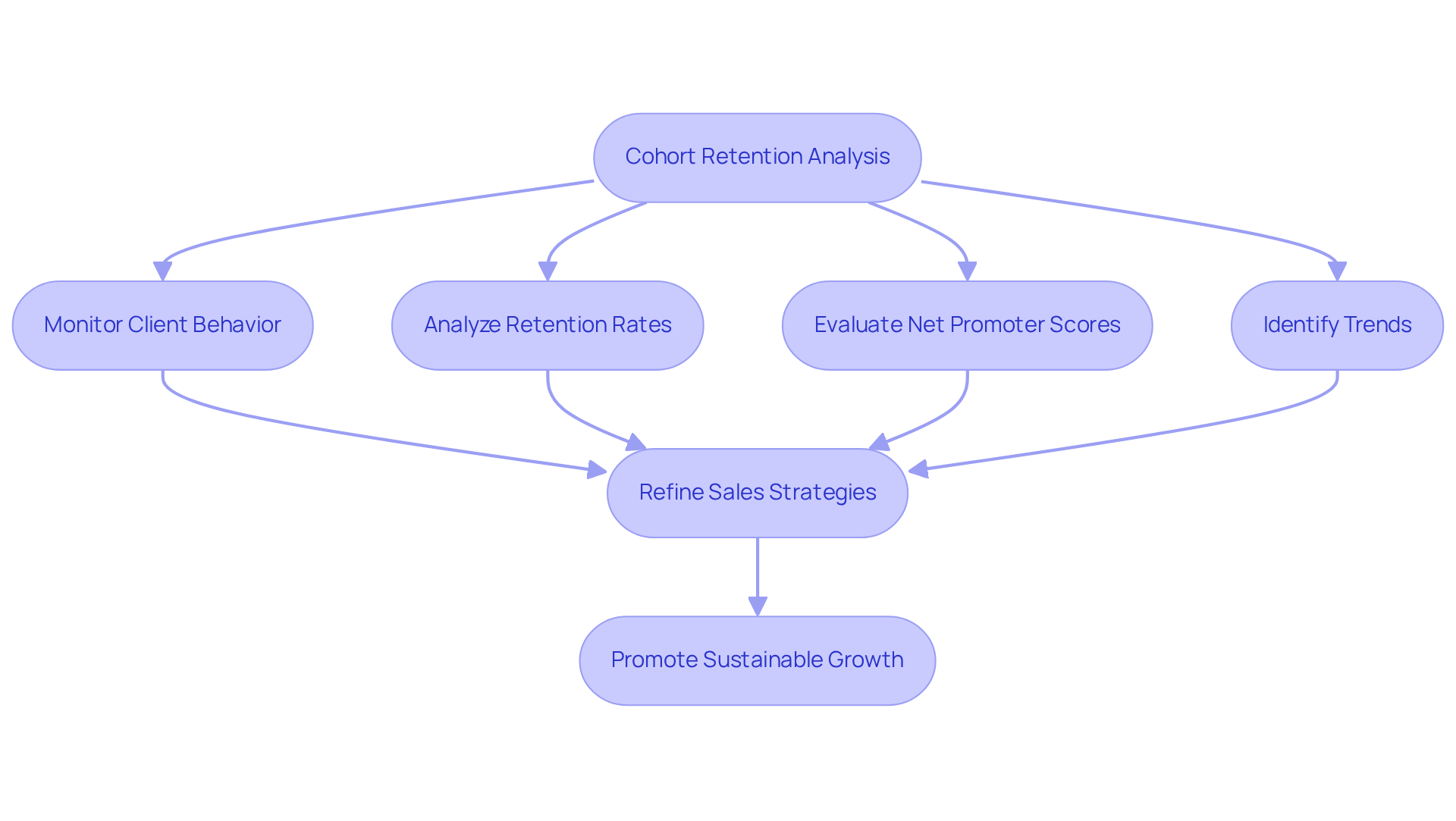
Owned Channel Investment: Building Sustainable Marketing Strategies
Investing in owned channels—such as company websites, blogs, and social media profiles—empowers startups to engage directly with their audience. This strategy not only cultivates a devoted clientele but also diminishes reliance on paid promotion. By leveraging these channels, sales leaders can acquire critical insights into client preferences, facilitating more targeted and effective sales strategies.
Recent trends indicate that startups are increasingly prioritizing owned media to bolster client loyalty. For instance, brands that create compelling content and foster community engagement through their blogs and social media platforms often experience higher retention rates. A study reveals that companies focusing on establishing connections via owned channels can achieve up to 60% higher retention rates compared to those relying solely on paid advertising. This approach reinforces the idea that marketing should prioritize relationship building over mere product promotion.
Marketing leaders stress the importance of authenticity and storytelling in these channels. As Seth Godin wisely states, 'Don't seek clients for your product.' Instead, businesses should identify items that resonate with their clients. This mindset encourages new enterprises to tailor their products based on genuine client feedback and interaction, ultimately driving sustainable growth. Additionally, Brian Halligan notes, 'To be successful and grow your business and revenues, you must match the way you market your products with the way your prospects learn about and shop for your products.' This underscores the necessity for new businesses to adapt their strategies to meet evolving client expectations.
Moreover, the shift towards owned media strategies reflects nontraditional startup signals, indicating a broader trend where new businesses recognize the significance of nurturing direct connections with their clients. This not only enhances brand loyalty but also establishes a feedback loop that informs product development and marketing efforts. This comprehensive strategy for client engagement is vital for cultivating a robust and adaptable business model in today's competitive landscape.
To effectively engage customers through owned channels, new businesses should implement:
- Regular content updates
- Interactive social media campaigns
- Community-building initiatives that invite customer participation
This not only fosters loyalty but also positions the brand as a trusted resource within the industry.
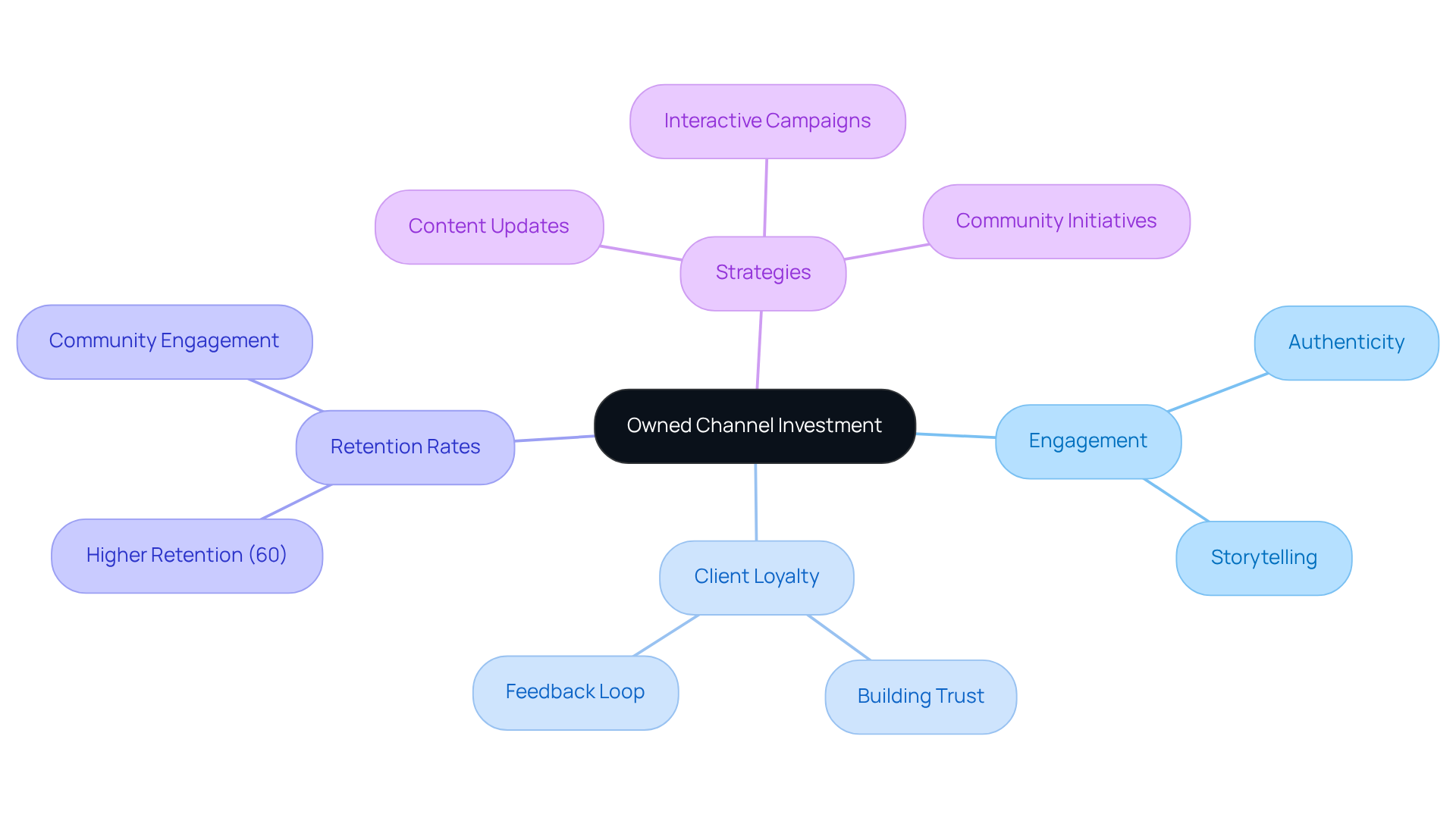
Diminishing Returns Monitoring: Optimizing Marketing Investments
Diminishing returns become evident when additional marketing investments yield progressively lower results, underscoring the necessity for startups to consistently monitor their campaigns. By leveraging performance data, revenue leaders can pinpoint when returns begin to decline and strategically reallocate resources to more effective initiatives. A recent case study illustrates this point: reallocating budgets from saturated channels, such as TV, to less saturated avenues like digital search can significantly boost overall revenue. This strategy not only maximizes the impact of each marketing dollar but also aligns spending with optimal performance thresholds—identified at approximately $60K for ideal spend and $90K for saturation.
Current trends in marketing performance analysis highlight the critical importance of ongoing adjustments and monitoring, ensuring that investments remain efficient and contribute meaningfully to growth. As revenue leaders navigate these dynamics, insights from industry experts like Rajiv Gopinath are invaluable. He asserts, "Understanding the shape of response curves is vital for businesses because it helps them determine the most effective marketing strategy for their products or services." Incorporating these insights will not only enhance but also optimize marketing investments.
In conclusion, by actively monitoring performance and adapting strategies, startups can ensure that their marketing efforts are both impactful and aligned with their growth objectives.
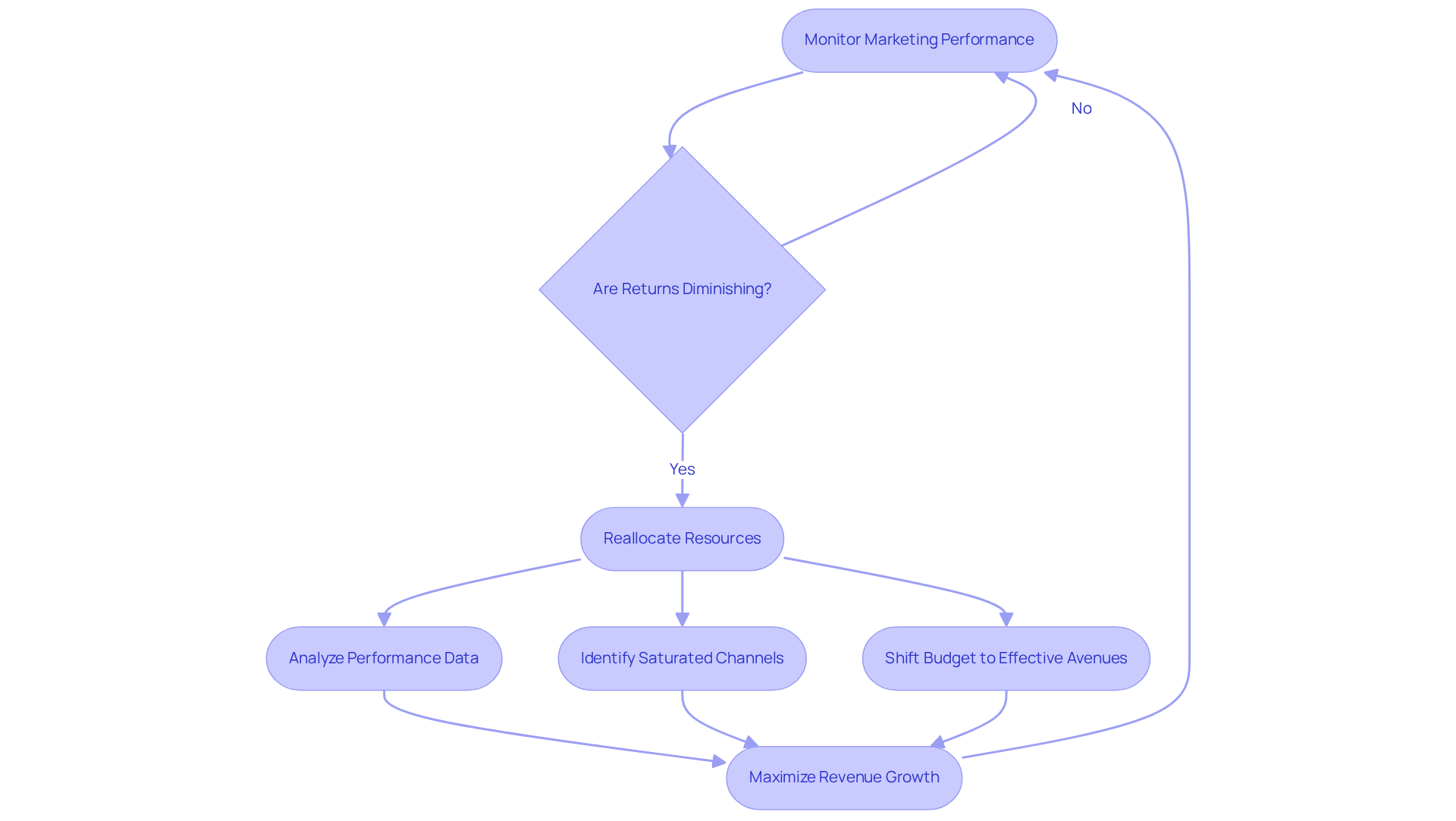
Investment Framework Development: Structuring Growth Strategies
Establishing a robust investment framework is essential for evaluating growth opportunities effectively. Startups must prioritize initiatives based on:
- Potential ROI
- Alignment with business objectives
- Market demand
By leveraging Websets' comprehensive market research services, business leaders can:
- Identify significant firms
- Assess company size
- Analyze tech stacks
- Uncover relevant articles
This not only enhances communication with investors but also ensures resources are allocated to the most promising opportunities, especially in the context of Series A funding and engineering growth.
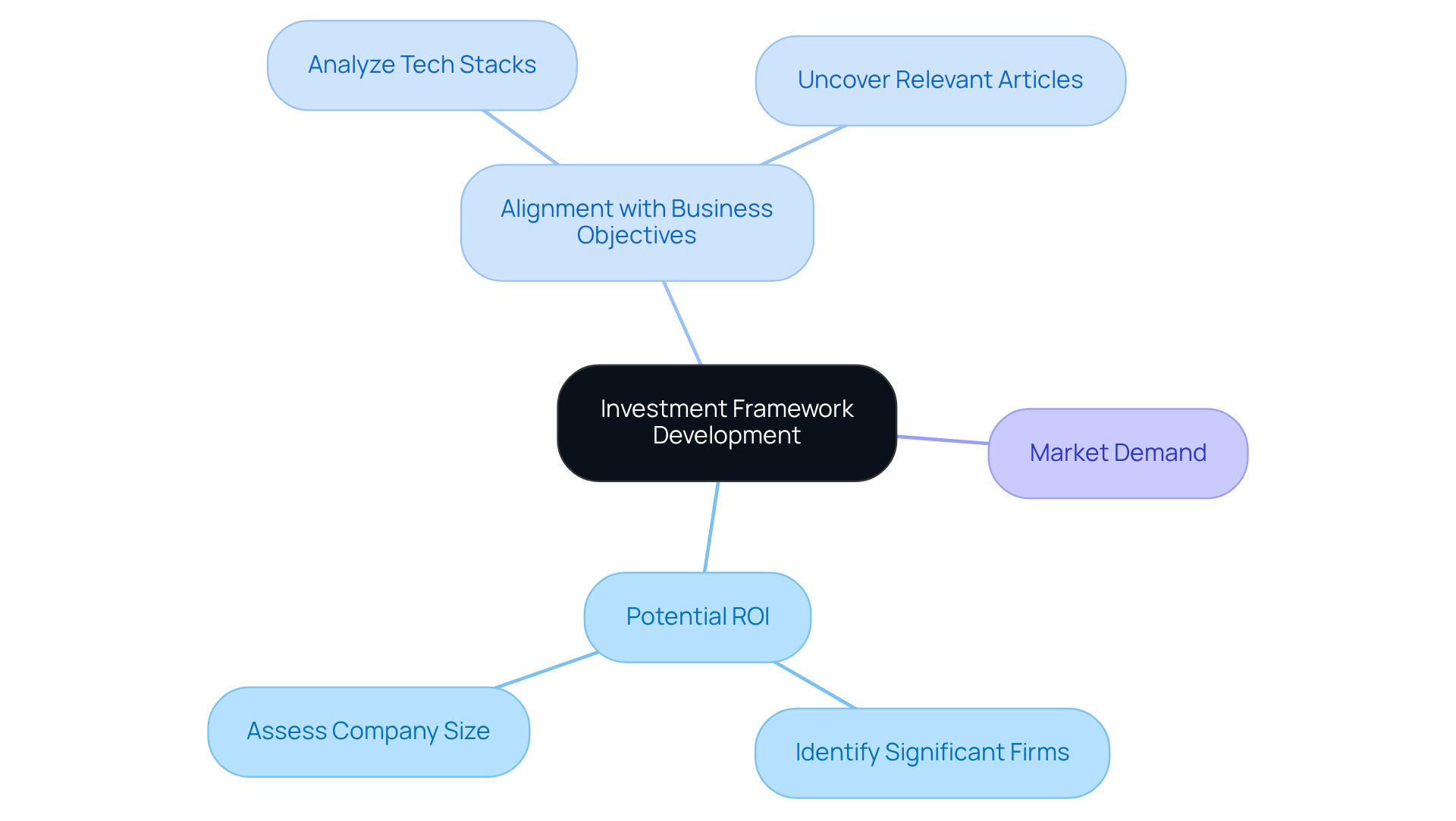
Brand Investment: Establishing Market Presence for Startups
Investing in brand development is crucial for new businesses striving to establish a unique market presence. This process includes:
- Crafting a compelling brand story
- Creating a distinctive visual identity
- Ensuring consistent messaging across all platforms
A robust brand not only builds customer trust but also nurtures loyalty, which is vital for driving sales growth. Recent trends show that new ventures are increasingly prioritizing in their branding strategies. For instance, brands that effectively communicate their core values can significantly enhance consumer loyalty; 76% of consumers prefer to purchase from brands they feel connected to, and 57% are willing to pay a premium for such brands.
Experts emphasize that a clearly defined brand approach can profoundly affect market perception. As one branding specialist aptly noted, 'In a world filled with noise and conflicting messages, authenticity stands out like a beacon.' Furthermore, maintaining consistent brand presentation across all platforms can boost revenue by 10-20%. A notable case is the company XYZ, which successfully built its brand equity by aligning its messaging with consumer values, resulting in a dedicated customer base. By prioritizing brand equity, sales leaders can leverage these insights to refine their strategies and ultimately achieve sustainable growth.
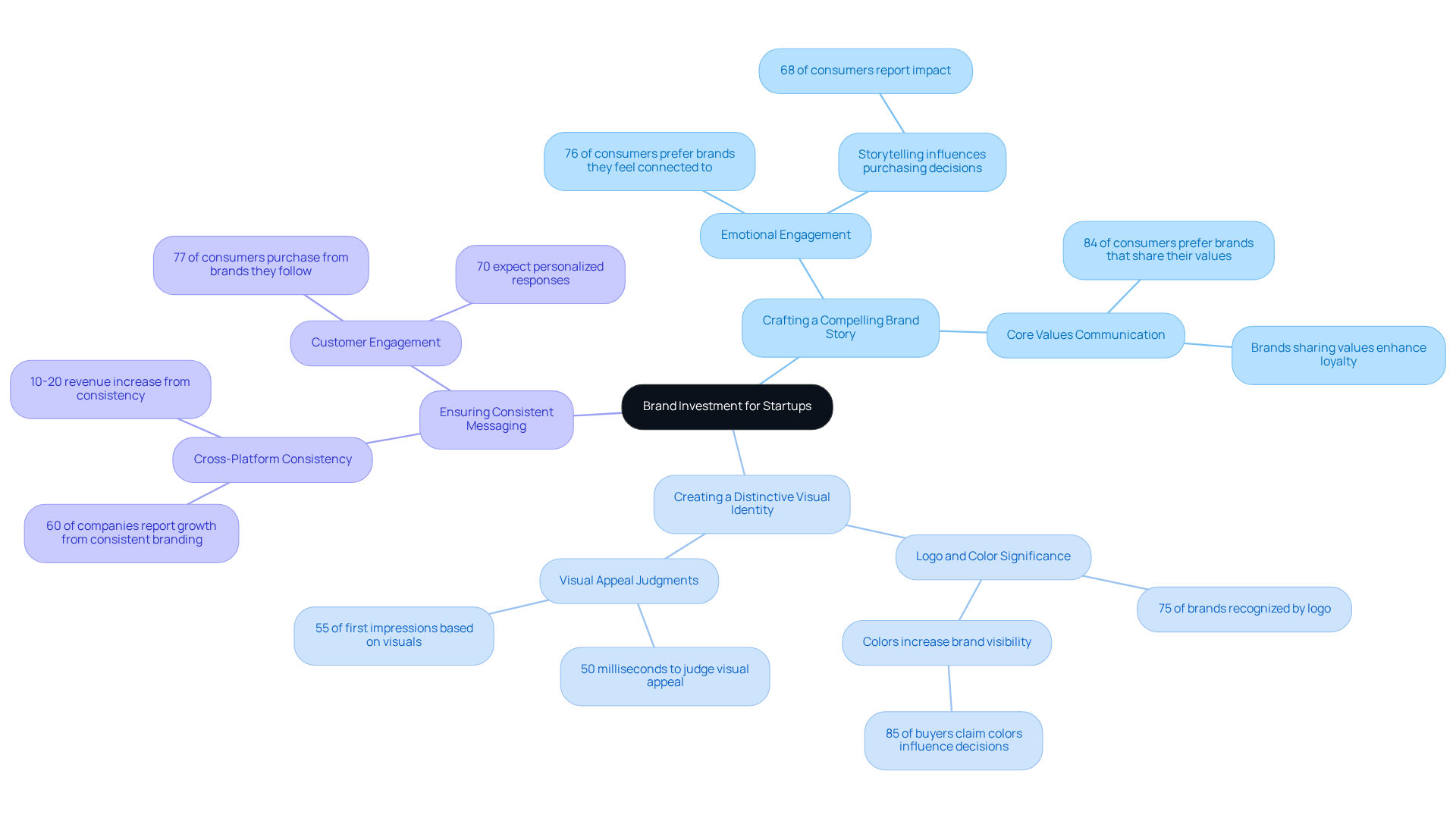
Philosophical Diversity: Fostering Innovation in Startups
Philosophical diversity is crucial for fostering innovation within teams. By incorporating a range of viewpoints and concepts, new ventures significantly enhance their adaptability to changing market conditions and utilize nontraditional startup signals to drive creative solutions. Research shows that companies with diverse founding teams are more likely to succeed, as they can leverage nontraditional startup signals to address challenges through a broader spectrum of insights and experiences. In fact, businesses with three or more founders are over twice as likely to thrive compared to those founded by a single individual.
Sales leaders must prioritize the cultivation of an inclusive culture that promotes open dialogue and collaboration. As Telle Whitney asserts, "Diversity drives innovation—when we limit who can contribute, we limit our ability to innovate." This perspective not only strengthens team dynamics but also results in that distinguish a startup in a competitive landscape.
Moreover, as Jeff Bezos emphasizes, continual reinvention is essential for business prosperity. Creating an environment that values varied viewpoints is a pivotal strategy for achieving this goal. By embracing philosophical diversity, organizations can position themselves for success in an ever-evolving marketplace.
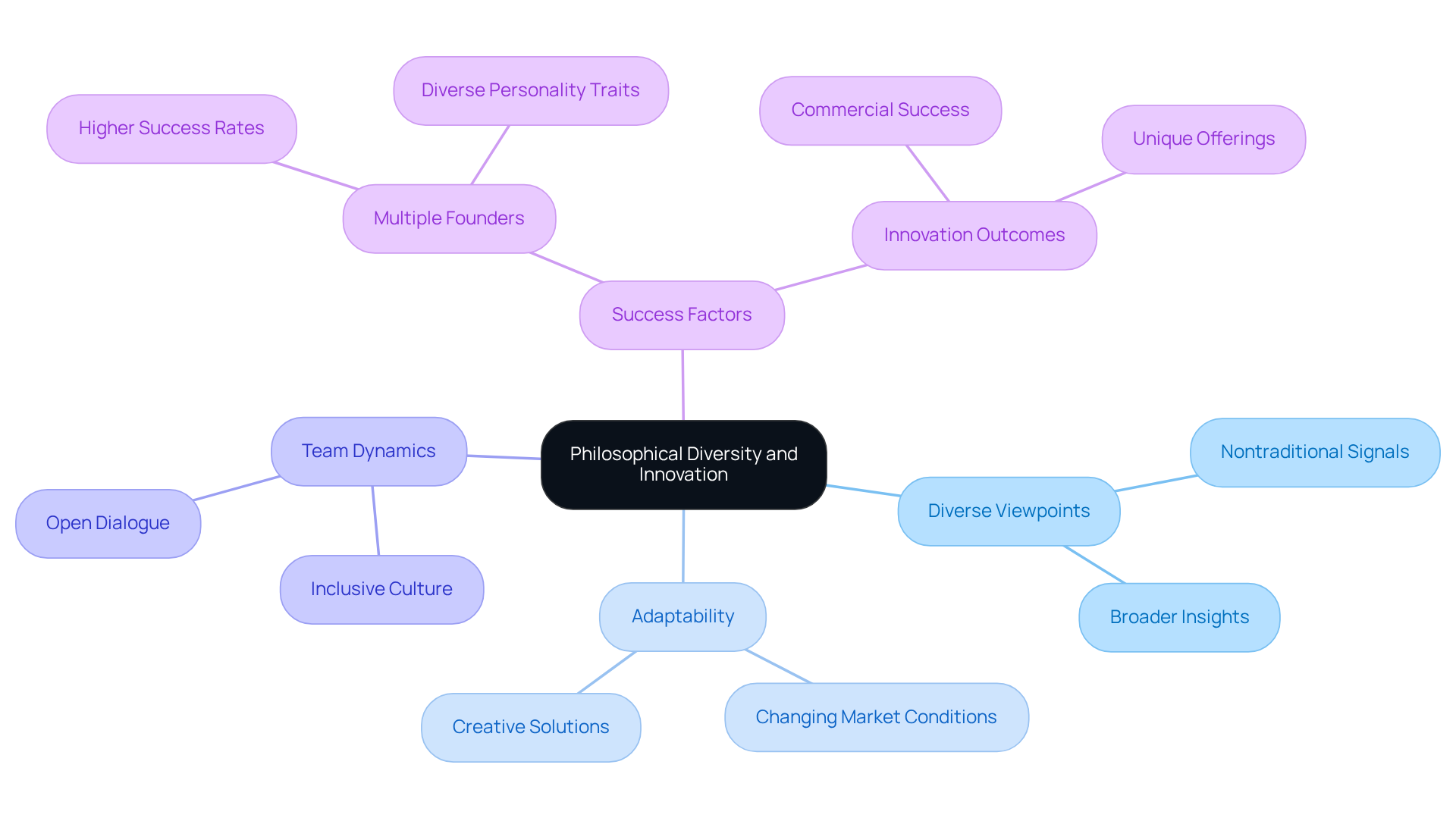
Paid Media Addiction Awareness: Recognizing Growth Barriers
Startups frequently fall into the trap of over-relying on paid media for client acquisition. While paid advertising can yield quick results, excessive dependence on it may hinder organic growth and brand development. To promote long-term sustainability, sales leaders must assess their marketing plans to ensure a that incorporates organic channels. This balance not only enhances brand visibility but also fosters a loyal customer base.
Recent trends indicate that startups are increasingly recognizing the significance of nontraditional startup signals, including organic growth methods such as content marketing and social media engagement, which facilitate more genuine connections with their audience. Marketing experts assert that a well-rounded strategy, combining both paid and organic efforts, is essential for navigating the competitive landscape and achieving lasting success.
By leveraging Websets' AI-powered sales intelligence, sales leaders can enhance their lead generation efforts by identifying companies and individuals that match hyper-specific criteria, enriching their outreach with valuable data. For instance, Websets has been effectively utilized by various new businesses to identify and connect with potential clients through targeted campaigns, showcasing the success of a balanced marketing strategy.
As noted, "A good CAC should represent a third of your customer lifetime value (LTV)," emphasizing the financial implications of marketing approaches. By incorporating insights from successful startups that have effectively balanced these methods with the capabilities of Websets, revenue leaders can implement practices that drive both immediate results and sustainable growth.
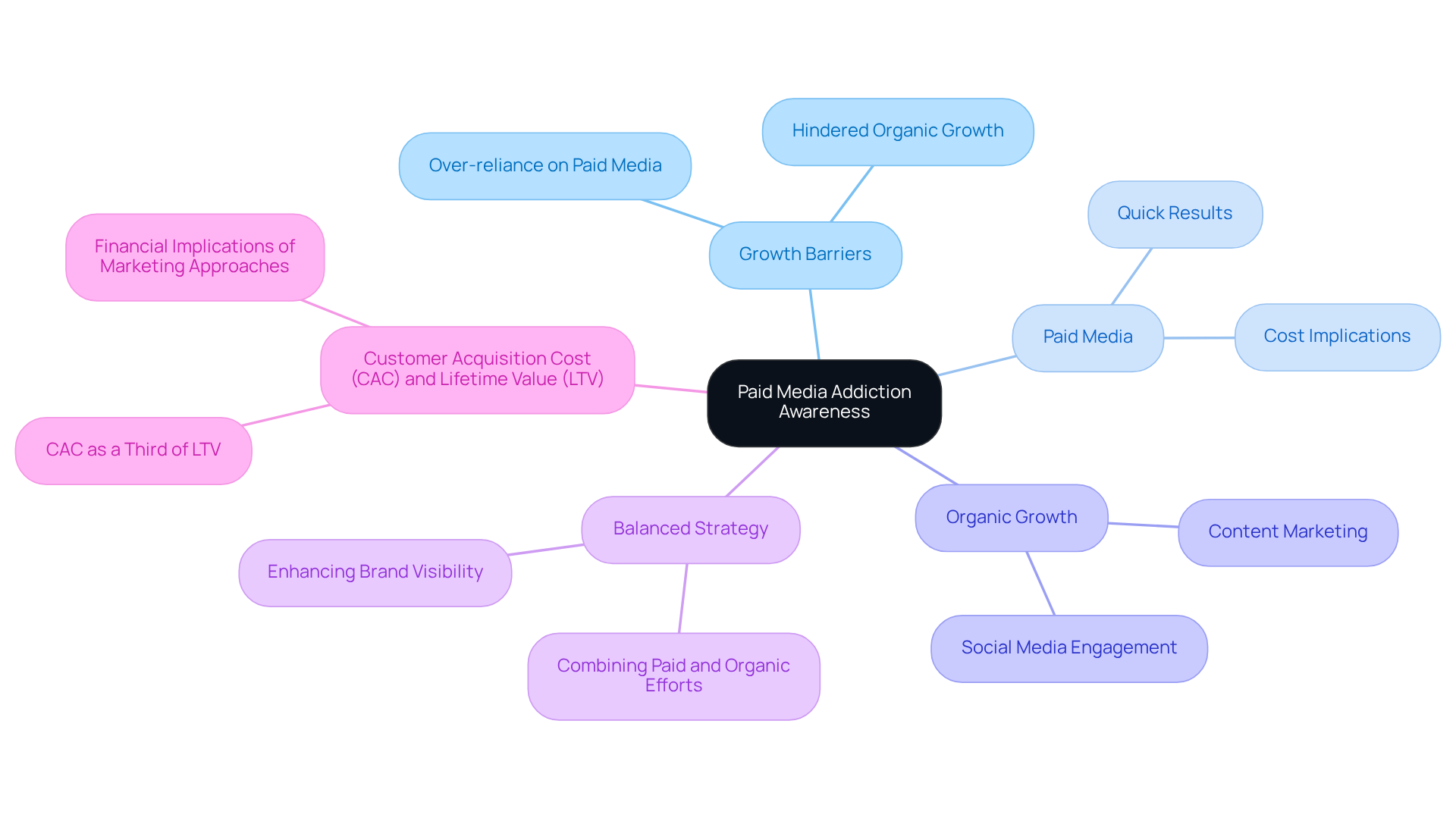
Non-Traditional Founder Challenges: Navigating Unique Startup Paths
Nontraditional startup signals indicate that founders face distinct challenges, including limited access to networks and resources. It is crucial for sales leaders to recognize these obstacles and adapt their strategies to effectively support these founders. This support may involve:
- Providing tailored guidance
- Offering essential resources
- Developing customized strategies that resonate with their unique experiences
By leveraging precision-driven B2B lead generation and advanced AI-driven recruitment techniques, sales teams can enhance their ability to identify candidates with unique attributes. This ensures that they are well-equipped to meet the diverse needs of unconventional startups by recognizing , ultimately driving success in a competitive landscape.
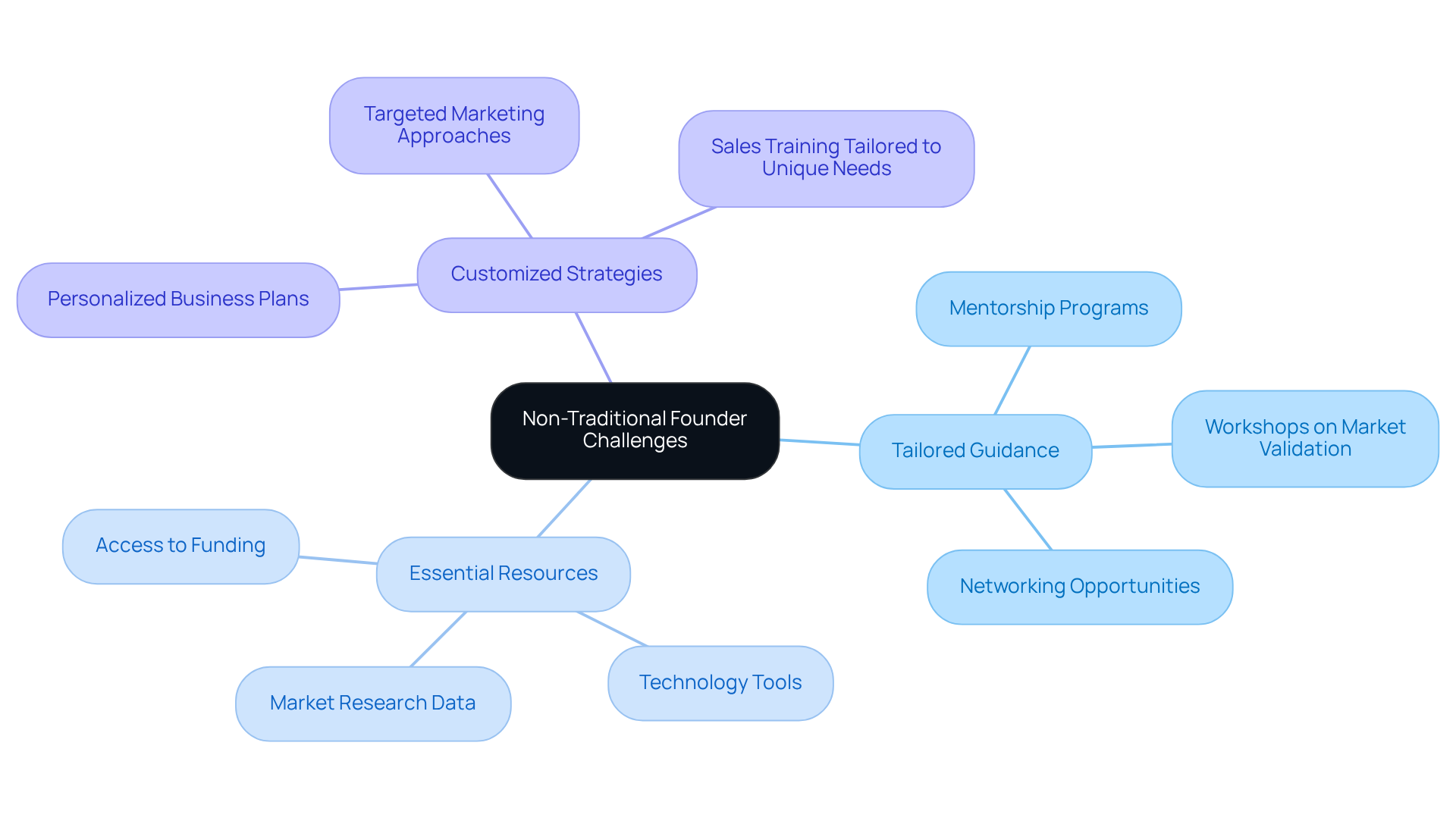
Research-Driven Strategies: Enhancing Decision-Making for Startups
Implementing research-driven strategies is essential for startups, as it utilizes data and analytics to inform critical decision-making. Investing in market research allows businesses to gain a deep understanding of customer needs, preferences, and trends. By leveraging Websets' AI-powered platform, business leaders can significantly enhance their lead generation efforts, identifying precise leads that meet highly specific criteria. This tailored approach not only ensures that marketing strategies are aligned with market demands but also promotes growth by providing and competitor landscapes. Advanced search capabilities offer a comprehensive understanding of the market, empowering sales teams to make informed decisions that resonate with customer expectations.
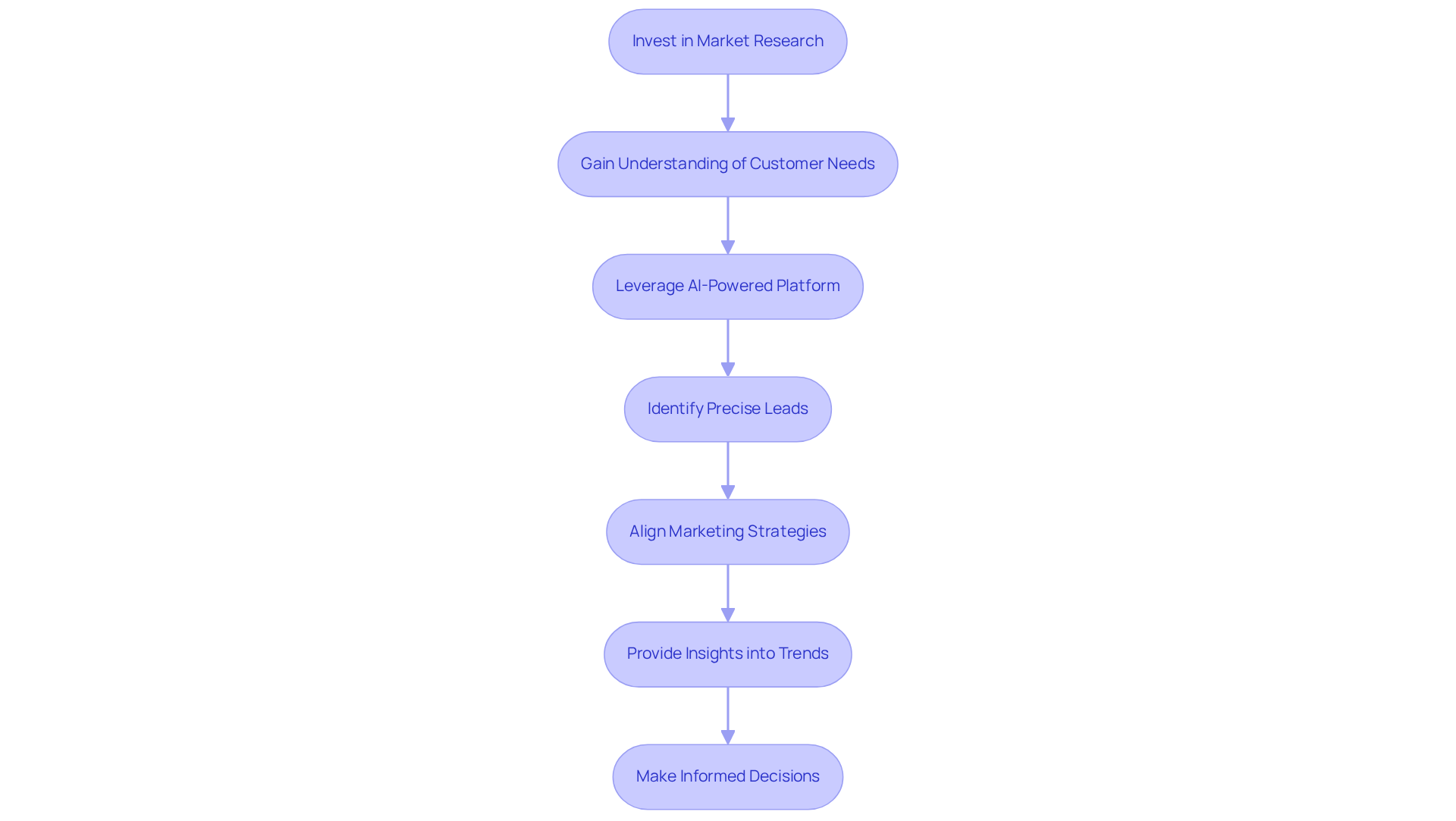
Conclusion
Recognizing nontraditional startup signals is crucial for sales leaders navigating the complexities of modern business landscapes. By embracing innovative strategies and insights, startups can significantly enhance their growth potential, optimize marketing efforts, and nurture sustainable client relationships. Leveraging technology, particularly AI-driven tools, plays a pivotal role in streamlining processes and improving decision-making, ultimately leading to increased conversion rates and customer loyalty.
Key concepts such as:
- cohort retention analysis
- owned channel investments
- the importance of philosophical diversity
emerge as critical components for startup success. The exploration of diminishing returns in marketing investments and the necessity for a balanced approach between paid and organic strategies further underscores the imperative for startups to remain agile and responsive to market demands. These insights serve as a roadmap for sales leaders to identify and act upon nontraditional signals that can propel their businesses forward.
The journey of a startup is fraught with unique challenges and opportunities. By adopting a research-driven approach, utilizing advanced tools like Websets, and fostering a culture of diversity and innovation, startups can establish a resilient foundation for growth. Sales leaders are encouraged to actively seek out these nontraditional signals and implement strategies that enhance immediate results while contributing to long-term sustainability and success in an ever-evolving marketplace.
Frequently Asked Questions
What is Websets and how does it assist startups in lead generation?
Websets is an AI-powered platform that revolutionizes B2B lead generation by using advanced algorithms to help startups connect efficiently with potential clients. It filters vast datasets, allowing business leaders to identify and engage the right professionals, thus enhancing outreach and conversion rates.
What are the benefits of using Websets' API?
Companies utilizing Websets' API have seen a 25% increase in conversion rates, a 30% rise in average order value, and a 40% reduction in manual work. This API improves lead generation and boosts overall operational efficiency.
Why is cohort retention analysis important for startups?
Cohort retention analysis helps monitor the behavior of specific client groups over time. High retention rates indicate product-market fit and client satisfaction, which are crucial for sustainable growth. Nearly 65% of business income comes from returning clients, highlighting the importance of user retention.
How does Net Promoter Score (NPS) relate to client retention?
Elevated NPS indicates client satisfaction and a willingness to recommend products, linking satisfaction directly to retention rates. Analyzing these metrics helps sales leaders identify trends and refine sales strategies.
What is the significance of investing in owned channels for startups?
Investing in owned channels, such as company websites and social media, allows startups to engage directly with their audience, build client loyalty, and reduce reliance on paid promotions. This strategy provides critical insights into client preferences, leading to more targeted sales strategies.
How do owned media strategies impact client retention?
Startups prioritizing owned media often experience higher retention rates. Companies that create compelling content and engage with their audience through owned channels can achieve up to 60% higher retention rates compared to those relying solely on paid advertising.
What are some effective strategies for engaging customers through owned channels?
Effective strategies include regular content updates, interactive social media campaigns, and community-building initiatives that invite customer participation. These practices foster loyalty and position the brand as a trusted resource in the industry.
What mindset should new businesses adopt regarding marketing and client engagement?
New businesses should focus on building relationships rather than just promoting products. They should tailor their offerings based on genuine client feedback and interactions to drive sustainable growth.




